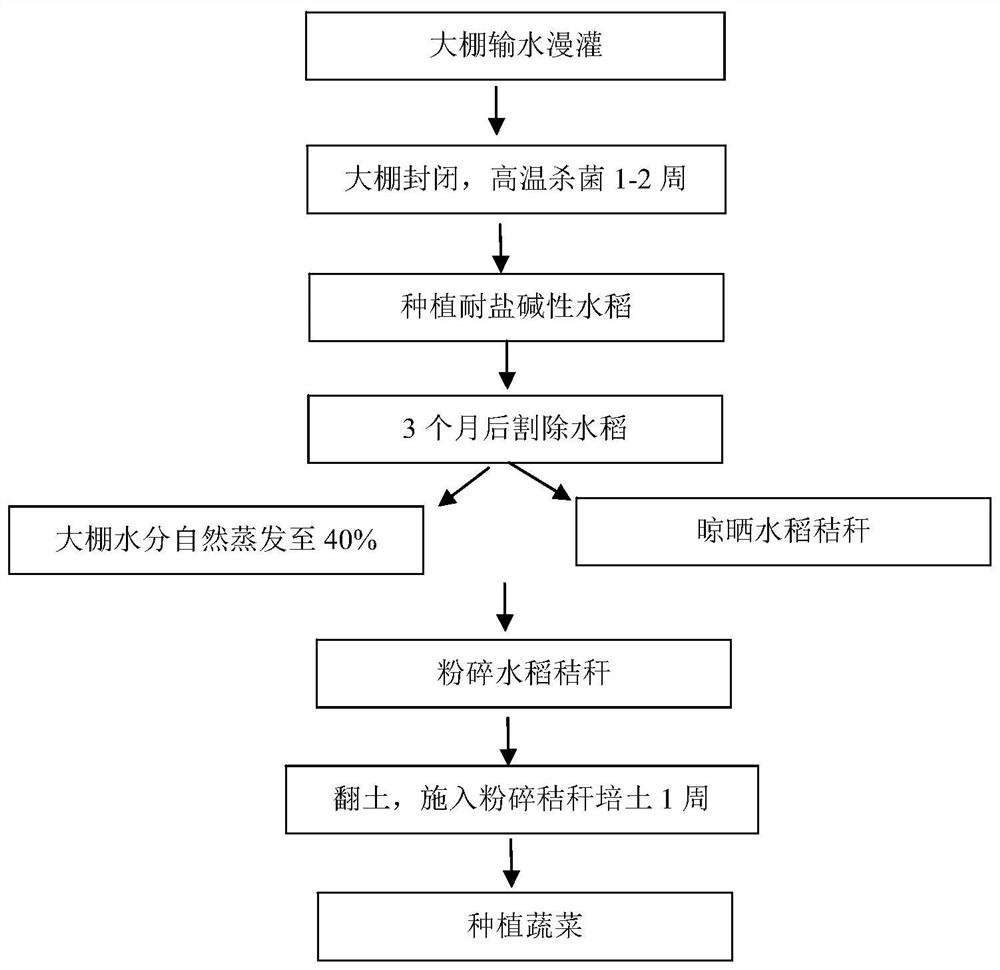Method for relieving soil secondary salinization of vegetable planting field
A secondary salinization and vegetable technology, applied in land preparation methods, rice cultivation, leafy crop cultivation, etc., can solve the problems of slow fertilizer efficiency, large amount of use, secondary salinization of fertilizer nutrient soil, etc., to increase yield , the effect of reducing secondary salinization and maintaining soil nutrient balance
- Summary
- Abstract
- Description
- Claims
- Application Information
AI Technical Summary
Problems solved by technology
Method used
Image
Examples
Embodiment Construction
[0014] A method for alleviating secondary salinization of vegetable planting soil, such as figure 1 shown, including the following steps:
[0015] Step 1: After harvesting the vegetables of the previous season in mid-May, flood the vegetable greenhouse with water and close the greenhouse for 1-2 weeks. Through natural light heating, the effect of high temperature to reduce harmful bacteria is achieved, and preparations are made for planting saline-alkali-resistant rice;
[0016] Step 2: After the greenhouse is closed for 1-2 weeks, open the greenhouse and plant saline-alkali-tolerant rice. During this period, keep the relative humidity in the greenhouse at 50% to 90%; Above ℃, the suitable temperature for panicle differentiation is about 30℃, the suitable temperature for heading is 25℃~35℃; the optimum temperature for flowering is about 30℃, and after 3 months of growth of saline-alkali-tolerant rice, regardless of whether the rice is mature or not, the rice should be cut off ...
PUM
 Login to View More
Login to View More Abstract
Description
Claims
Application Information
 Login to View More
Login to View More - R&D
- Intellectual Property
- Life Sciences
- Materials
- Tech Scout
- Unparalleled Data Quality
- Higher Quality Content
- 60% Fewer Hallucinations
Browse by: Latest US Patents, China's latest patents, Technical Efficacy Thesaurus, Application Domain, Technology Topic, Popular Technical Reports.
© 2025 PatSnap. All rights reserved.Legal|Privacy policy|Modern Slavery Act Transparency Statement|Sitemap|About US| Contact US: help@patsnap.com

